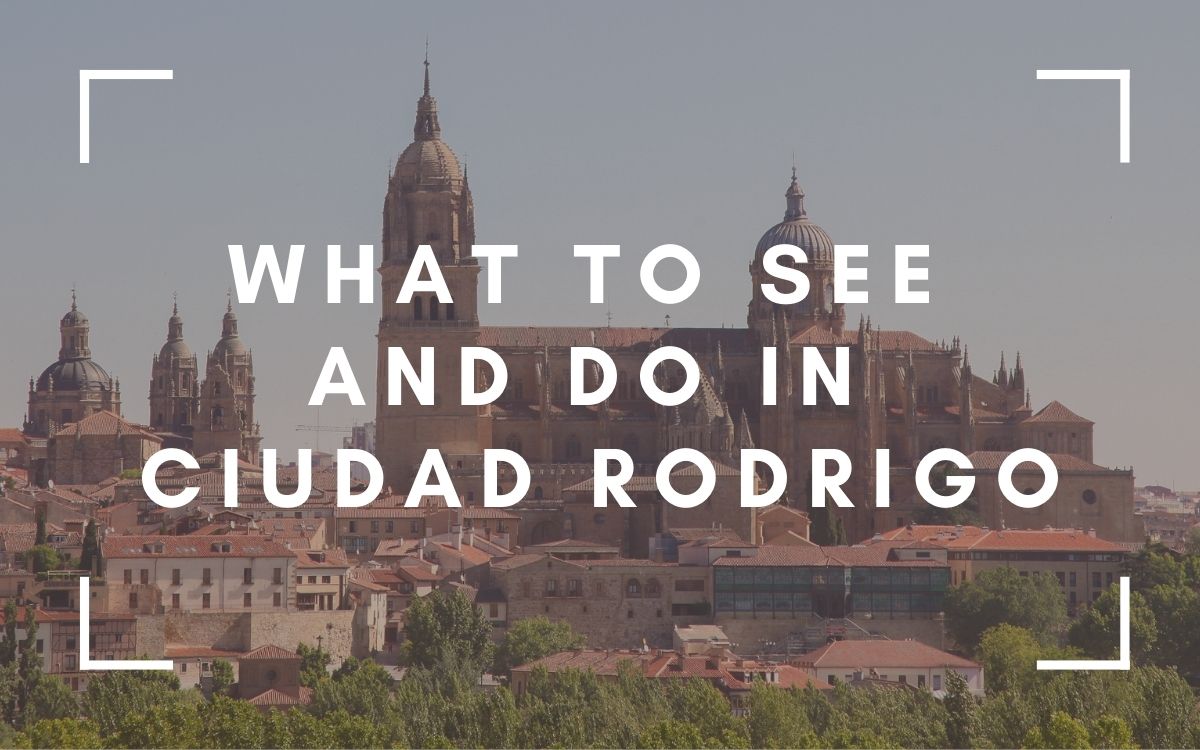Ciudad Rodrigo is a beautiful, historic city in Salamanca with a lot to offer visitors. From food and drink to sightseeing opportunities, there are many things to do while visiting this small city.
In this post, I’ll share with you some of my favourite things to see and do in Cuidad Rodrigo as well as a couple of my favourite places to eat and some accommodation suggestions, so strap in.
Coming your way in this post - click to expand ->
I’m lucky that I get to visit Ciudad Rodrigo regularly. I spend most of my summers in the nearby Sierra de Francia mountains when I’m not travelling. With so many villages to explore, the whole region is a hidden gem of Spain. But the one thing they share is that Ciudad Rodrigo is their go-to “big town”.
The city’s heart is surrounded by some beautiful walls breached in the Siege of Ciudad Rodrigo, one of many battles in the Napoleonic war that plays heavy into this area’s history. These days they are a lovely backdrop for pictures and make great views.
The main street in city is called Calle Mayor, which I’m told used to be relatively narrow as it was designed with horses and carriages in mind. These days it’s a bit wider but still charming. In the centre, you’ll find Plaza Mayor with its many streetside cafes serving up hot chocolate and pastries for those who stop to enjoy their drinks outside in the sun! Oh, and a fantastic place for ice cream (more on that in a bit).
The best way of getting around the city walls is by walking along with them or taking one of their guided tours. It will take around an hour to complete the entire circuit with lovely views over the river and towards the mountains. However, what you see along the walls is all a prelude to what’s inside – so let’s take a look at some of the best things to do in Ciudad Rodrigo.
1. Visit the Ciudad Rodrigo Cathedral
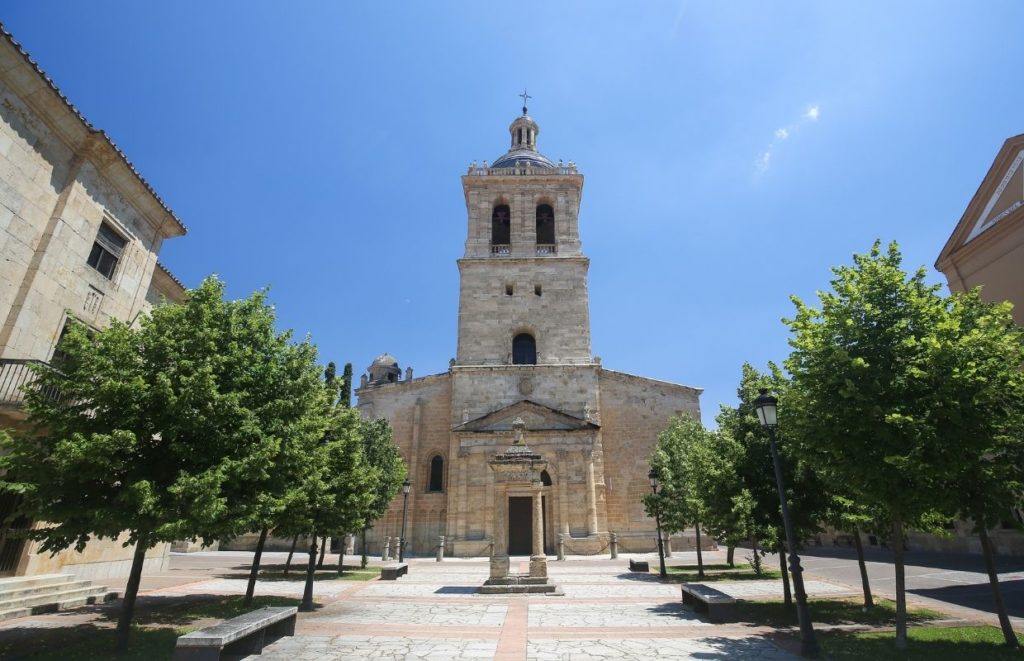
As you approach Ciudad Rodrigo, from almost any direction, you are unlikely to miss the tower of the Cathedral of Santa María.
The Cathedral is one of the main attractions in Ciudad Rodrigo. It was built in the 12th century. It also served as one of the last defensive structures when Napoleon invaded during the early 1800s. Construction of this building began when King Fernando II was in power (1157-1188).
It is made up of a Latin cross ground-plan with three naves and modified from what it once looked like. Three main façades give access to the building and a cloister on the north side.
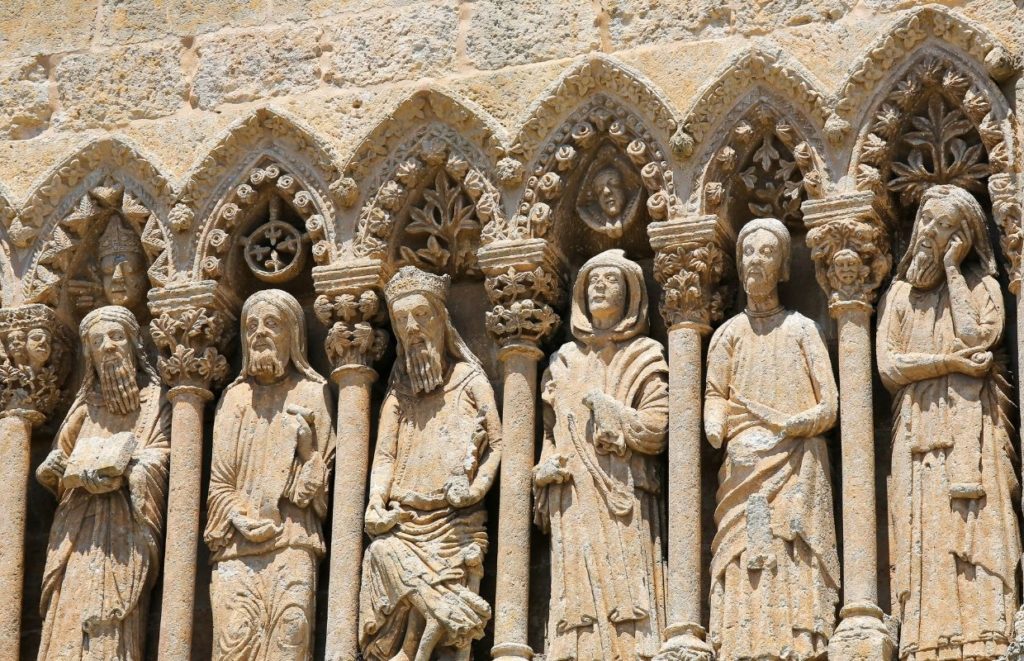
The one thing that stands out to me is the amazing detail in the stone carvings around the door. You can visit the Cathedral and enter for a small fee. Still, even if you don’t plan on going in, a wander around the outside is definitely recommended.
Find out more information about the opening times on their website.
2. Go potty at the urinal museum
No, I’m not taking the piss. Located next to the Cathedral is the Museo del Orinal, a small museum dedicated to going potty. Chamber pots, to be exact.
While it is not a huge museum, it is worth paying the small number of Euros it costs to go inside, just to say you have been. Spent a penny, you could say.
More than 1300 chamber pots and commodes are displayed in the museum from 27 countries. To be honest, some of them impressed me, especially the one designed for travel.
There are a couple of things I thought were lacking. First, apart from the date and country of origin, there isn’t much more information on the exhibits. Still, there was an enthusiastic guy on the door who seemed happy to talk us through any questions we had.
It would also have been nice if they were arranged in a more storytelling way. These potties have seen many bums from the Romans to Asian dynasties, Royalty to peasants; one consistent throughout history is the need to poop. I felt more organisation to tell these stories would have been nice.
Butt, that said, it is a fun way to spend 30 mins to an hour or so and escape the heat.
Check out their website for more details.
3. Wander along the city walls
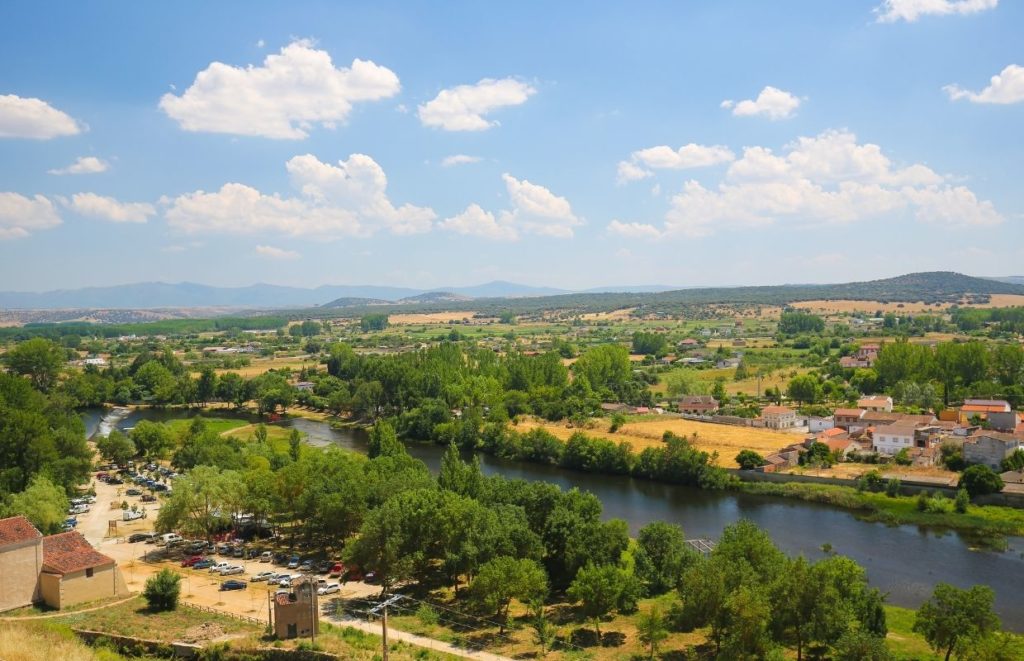
As I mentioned in the introduction, Ciudad Rodrigo is a walled city with all the walls either still intact or reconstructed. Thanks to this you can easily walk a whole lap of the city.
The walls were constructed during the 12th century with bastions, ravelins, and artillery batteries added to the defences during the 17th century.
You will get some beautiful views down to the river and the surrounding mountains and plains from the walls.
On average, it would take around an hour to complete the circuit and is worth the effort.
4. Tapas with the toros
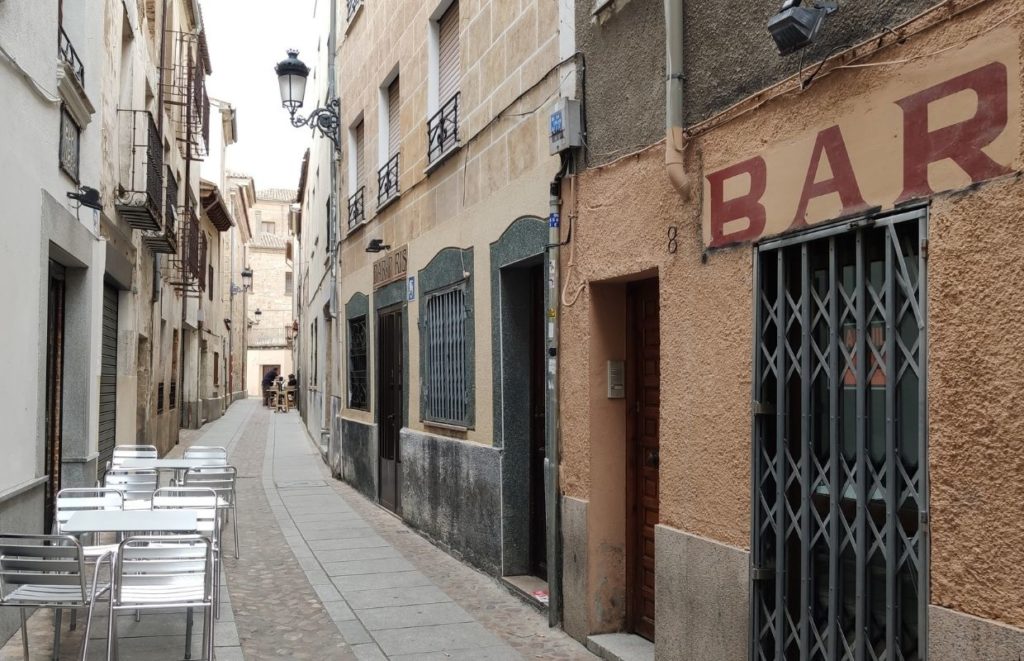
OK, there are no actual bulls here, but the street I’m talking about is Calle Toro.
Back at the turn of the century, this tiny street with high walls on either side used to be the epicentre of the city’s nightlife. Bars on either side were buzzing with the sound of locals and visitors mingling, munching on some farinato (local sausage) and sharing a few beers.
As the city grew and more choices were available, the street slowly fell out of fashion. Finally, however, it is starting to make a welcome come back.
A couple of bars are reopening along there now, and I have found a new favourite, Cafe Bar La Tertulia. We visited as a family and enjoyed some delicious tapas. Still, more than that, the owners were another level of friendly. I’ll have more on this later in this article in the where to eat section; I’ll even tell you about the magic!
Aside from La Tertulia, there are a few other options as the atmosphere is really returning to this little street.
5. Eat ice cream and people-watch in the Plaza Mayor
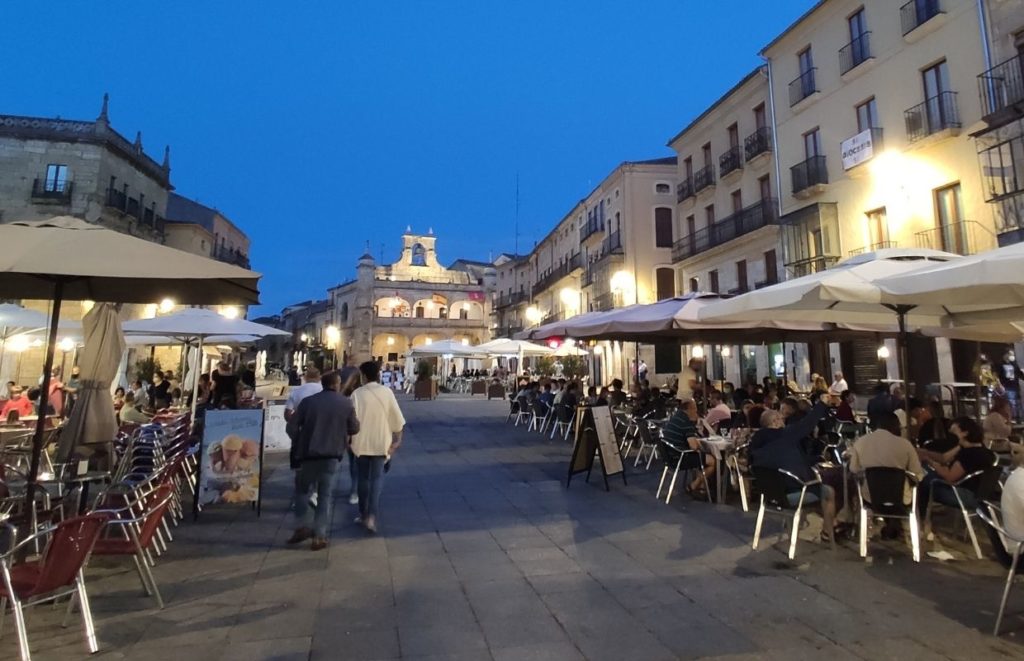
As with most Spanish cities, there is a lovely square in the city’s centre called Plaza Mayor. Here you will find loads of streetside dining cafes and restaurants, and it is the perfect spot to kick back and do a spot of people watching.
Suppose you visit on a hot day (or cold as ice cream’s always good). In that case, I would highly recommend an ice cream bar called Heladeria Mentha Y Limon. They have a vast array of homemade ice cream available to eat streetside or takeaway. While I would happily recommend any of them, my personal favourite is the one made with speculoos biscuits.
The slightly spicy flavours of the biscuit, cinnamon, nutmeg, cardamom, cloves, and ginger, just go so well in ice cream; it’s borderline life-changing.
6. Ciudad Rodrigo City Hall
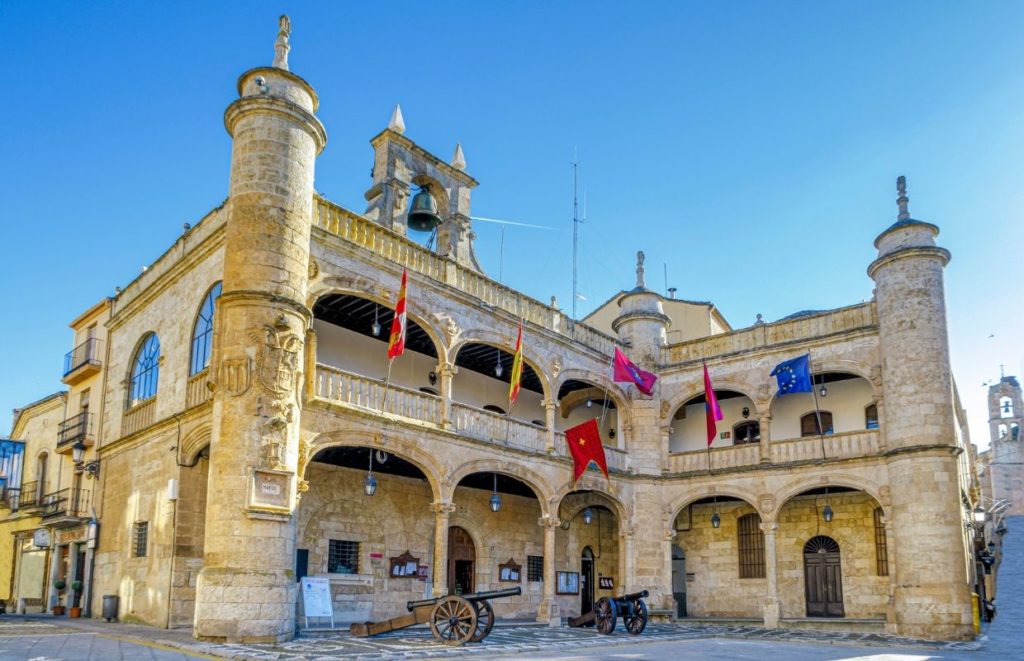
The Ciudad Rodrigo City Hall is located right in the heart of the city towards the top end of the Plaza Mayor. This striking 16th-century building was built on a corner with two towers hovering over it and a handsome bell tower on the longer side.
It looks equally beautiful if visiting Cuidad Rodrigo during the day or after the sun has set and the lights illuminate the facade.
Depending on when you visit, you may be able to enter. Inside is a small tourism office as well as temporary exhibits and galleries.
Just be aware, there is unlikely to be any help with translation. Most of the information will be in Spanish, so if you’re not a Spanish speaker, have your phone battery charged and Google Translated bookmarked! However, even if you don’t understand any of the words, it is still worth popping your head in to have a nose around.
7. Take in the history by tracking down some of the palaces and mansions
Not far from Plaza Mayor, you’ll find Plaza Conde. Here you will find some of the most famous buildings in Ciudad Rodrigo.
Palacio de los Castro
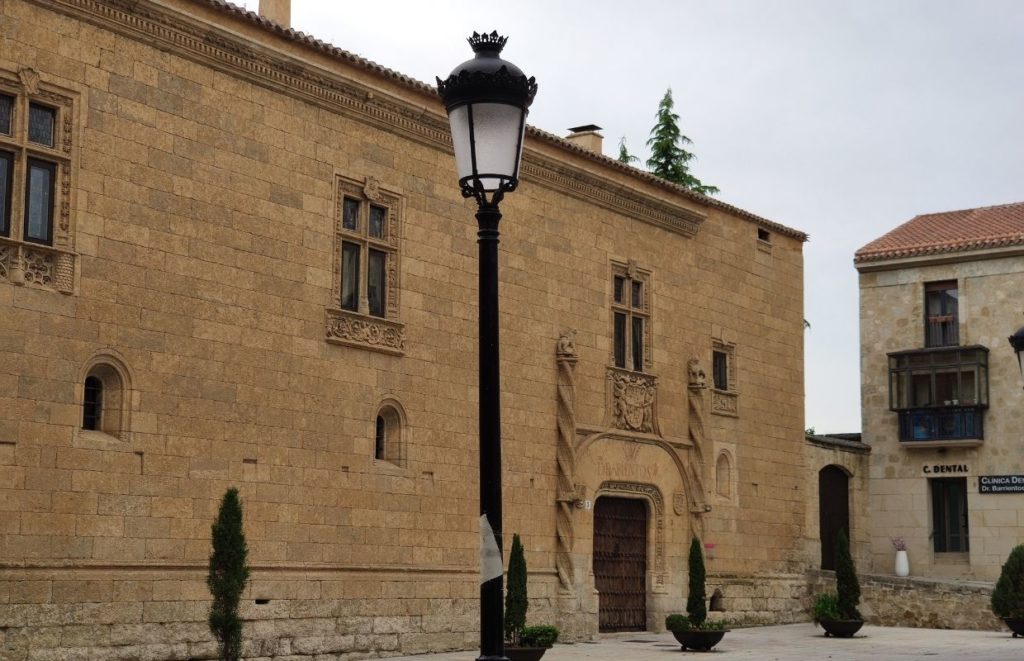
The name of this Palace, which dates from the mid-18th century, comes from Don Tomás de Castro, to whom it was formerly owned. It contains several works by prominent Spanish Baroque painters such as Juan del Castillo and Francisco Bayeu. The front is notable for the main coat of arms.
Palacio Alba de Yeltes
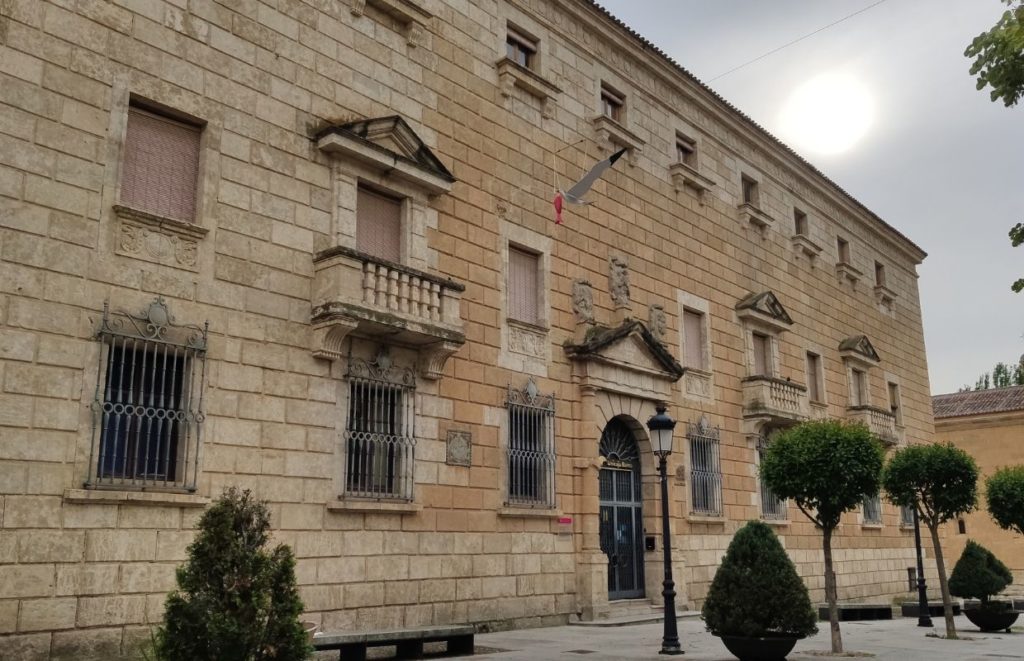
The Palace of the Count of Alba de Yeltes was built upon an earlier one erected by the Nieto de Silva in the mid-sixteenth century. The shields of Nieto, Silva, Pacheco and Guzmán stand out against the magnificent baroque doorway with a semicircular arch between two columns and a triangular pediment.
The Palace was rebuilt at the beginning of the eighteenth century. During the early nineteenth century, it became a barracks and has been used for various purposes (invalids’ barracks; supply depot…).
Palacio de Moctezuma
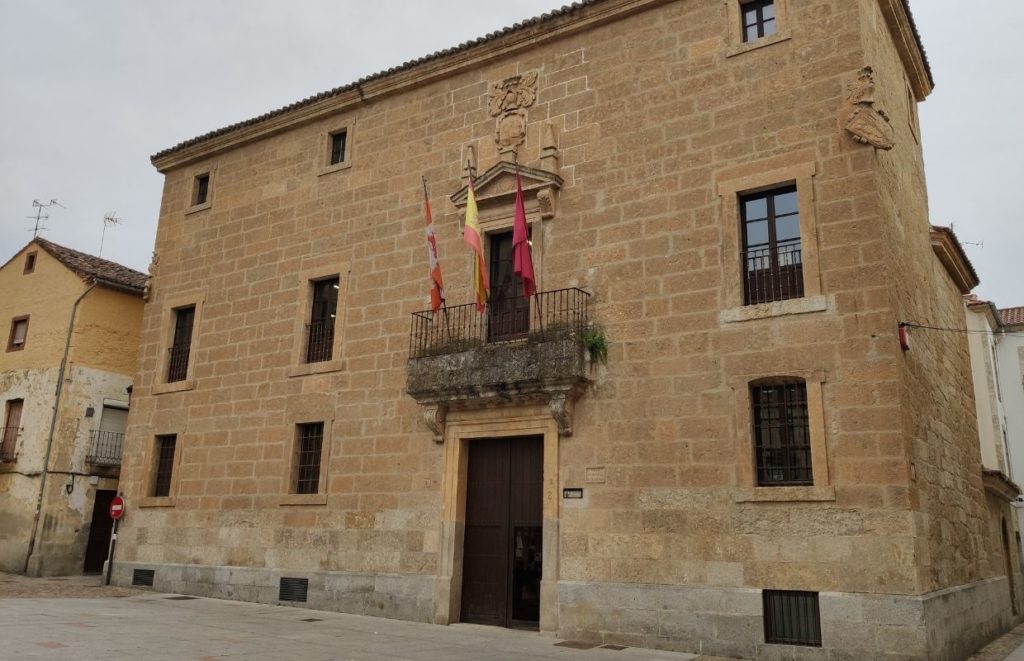
The Palacio de Moctezuma got its name because it was built by descendants of Moctezuma. Since 1984, it has served as the Municipal House of Culture.
It is a massive home with minimal decorative ornamentation on the outside; most construction took place in the 16th century.
The stand-out feature is a bust of King Juan Carlos I made by the local sculptor José Martínez.
Some more interesting architecture
Away from the plazas are some other notable buildings worthy of investigation.
Palacio de los Águila
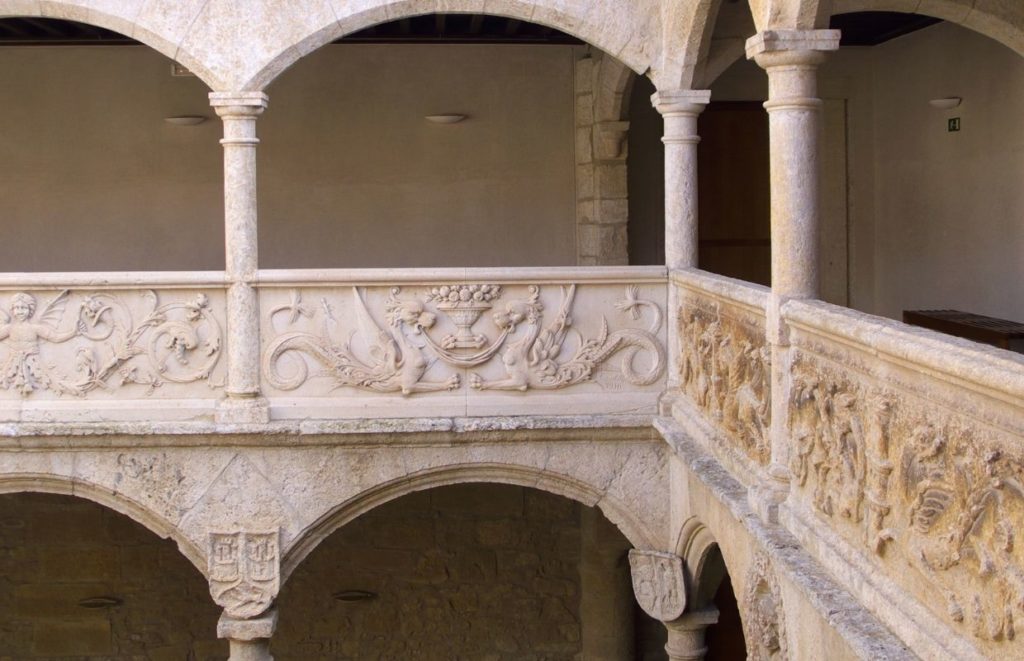
The Palacio de los Águila, also known as the Casa del Príncipe or the Marqués de Los Altares, is a late-16th to early-17th-century palace. It is the city’s largest building. It covers an entire block without having any connected structures.
It has a garden, two interior patios, and a private chapel within its enclosure.
The palace regularly holds art exhibits and exhibitions based on the local history. You can find more about what is on and when to visit here.
Casa de Los Vázquez
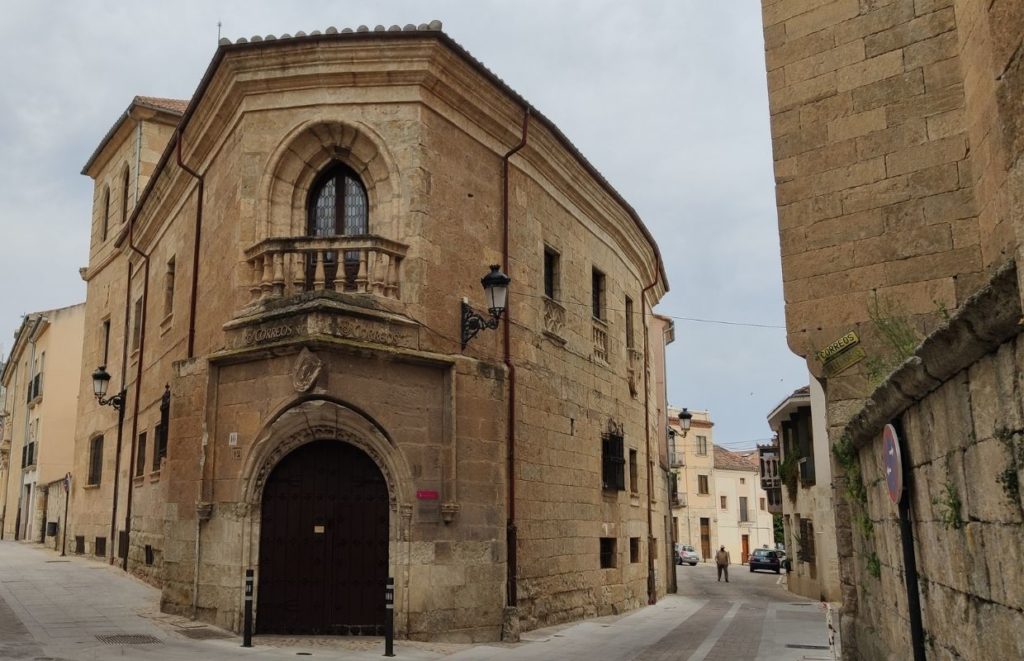
Casa de Los Vázquez is a beautiful palace with a Gothic doorway in the corner with an impressive coat of arms hanging over it. It is widely regarded as among the most beautiful buildings in Ciudad Rodrigo and was Built in the 16th century.
Since 1944, it is has operated as a post office and can be visited for a look around during business hours. There is no admission fee, but don’t plan on spending too long inside.
8. Visit the Castillo Alcazar de Enrique II
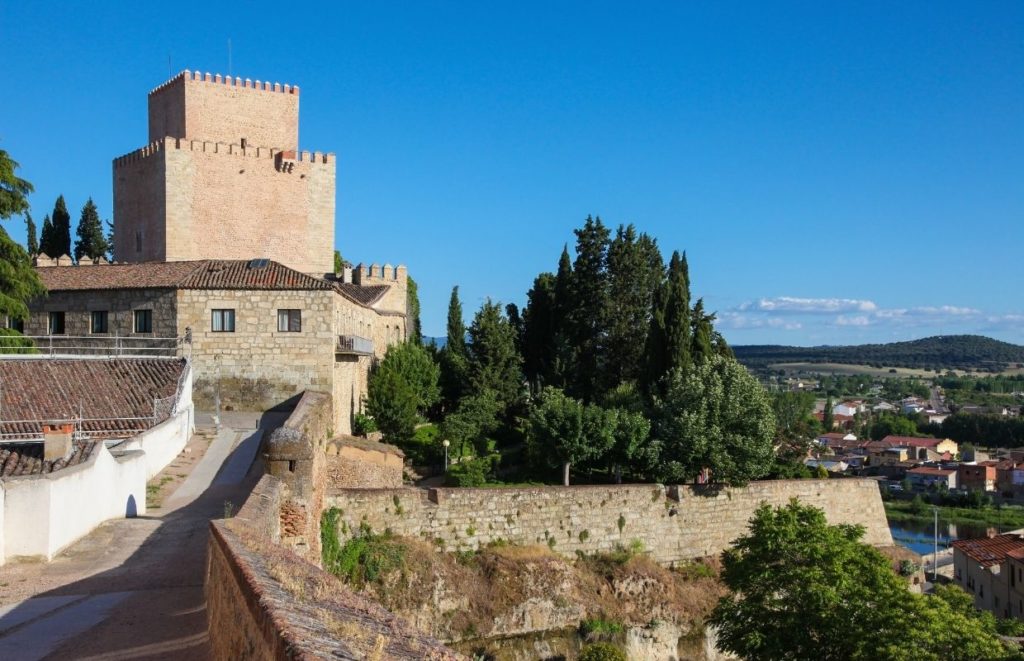
The Alcázar of Enrique II de Trastamara was built in 1372 by Lope or Gonzalo Arias by order of King Enrique II.
The three-story keep with pointed windows stands against a wall bristling with defensive towers.
Until 1928 it was home to the regional museum before becoming a Tourist Hotel, and it remains to this day.
9. Saturday is a shopping day
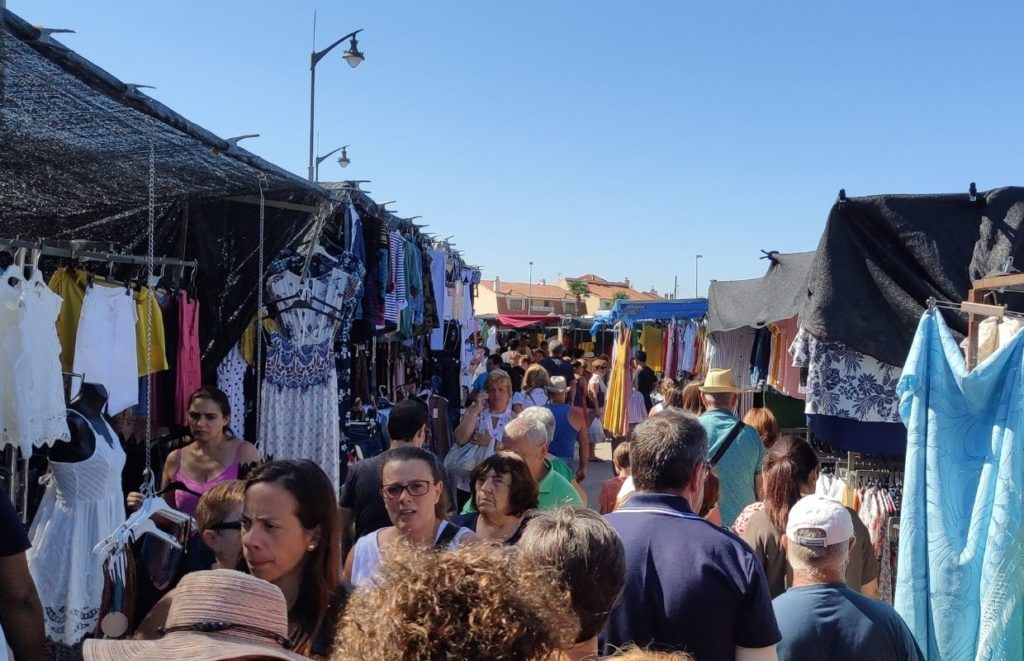
If you are around on the weekend, something to not miss is the vast weekly flea market. Located just outside the eastern wall, you’ll find many stalls selling anything you could want, from fashion and underwear to frying pans and epilators. It really is a little treasure trove of deals to be had. Just remember to wear your best bargaining hat and try a bit of negotiation.
10. Leave the city walls behind
All of the recommendations so far have been within the city walls. But, there are a few things to know about outside.
Las Tres Columnas de Ciudad Rodrigo
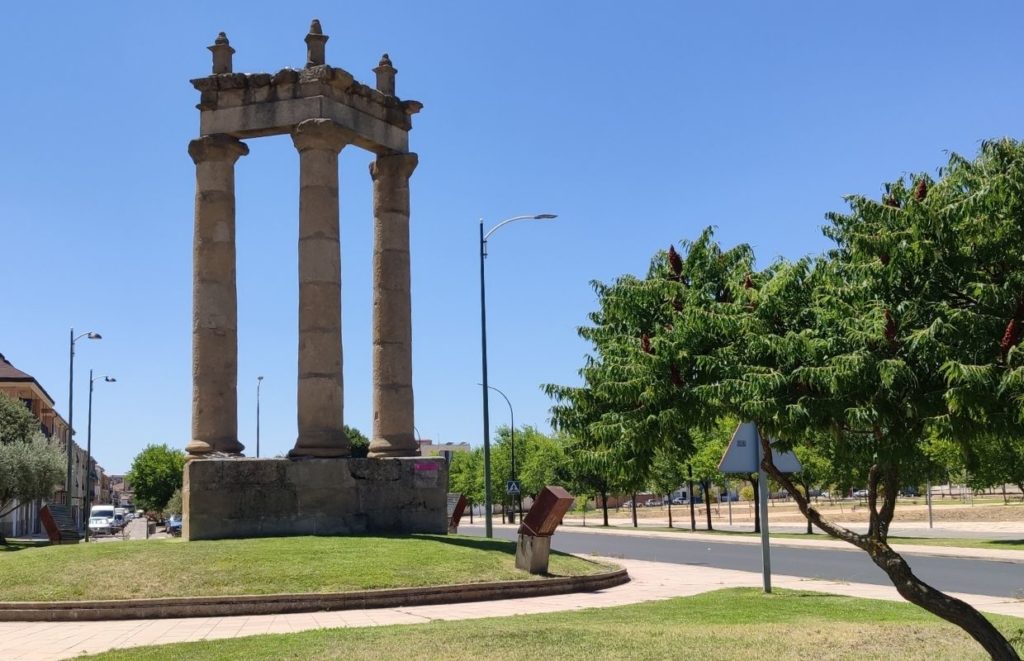
If you pop your head into any souvenir shop, you will undoubtedly see a replica of Las Tres Columnas. This translates to The Three Columns in English. They have become a symbol of the city and even appear on the coat of arms.
But unless you have a car, you are unlikely to see them.
The columns now site quite a long way out of the city centre on a roundabout in an area known as Campo de Toledo.
It actually took me several visits to find them myself, and I wondered why something the locals hold so dear is so out the way.
Apparently, the columns are original parts of a Roman Temple that used to exist where Plaza Mayor is now and act as a strong representation of the city’s history with its roots back in the Roman days.
They had been standing in Plaza Mayor for nearly 350 years when it was decided they would be removed, I can only assume for building works. Much to the locals’ discontent, in 1903, the columns were removed from the square and relegated to a forgotten corner of the city.
However, the issue was never forgotten. Finally, in 1922, the city’s then-mayor agreed to re-locate them somewhere more prominent. Still, it wouldn’t be back in the Plaza. So they ended up being rebuilt where they are today in the main entrance to the city.
Like I mentioned at the beginning of this little section, I find it strange that something so important to the city and the symbol of pretty much any souvenir you find should sit so far out of the way. Of course, if you have a car, by all means, go and see them, but there isn’t really much else out there.
Grab a drink and relax by the river
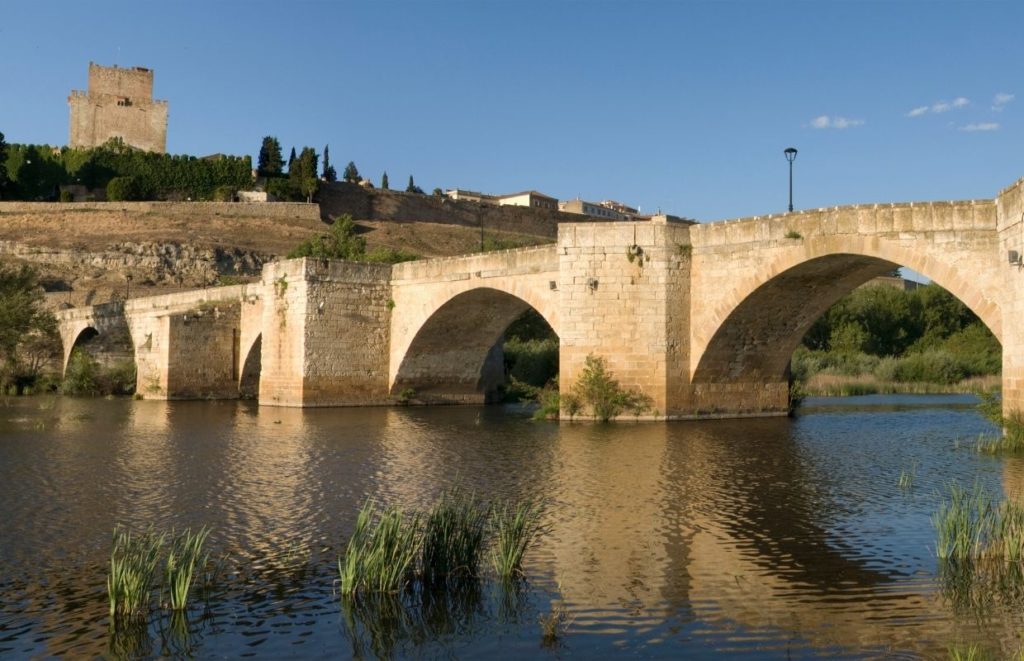
One of my favourite Spanish words I learnt recently is chiringuito. Not only is it satisfying to say “cheer-in-gee-toe”, it means a small hut that sells refreshments (usually beer) by a river or beach. So when I found out there is such a place in Ciudad, I had to check it out, and I was not disappointed.
The Rio Águeda is about a 15-minute walk down from the historic core. It has a few places you can sit out in the green riverside grass and relax with views of the river and Roman Bridge.
There is a small area where you can dip your feet in, but it’s more for enjoying a drink than going for a swim.
I would say I wouldn’t recommend crossing the bridge. I did that to get some photos, and I think I accidentally found the worst part of the city and didn’t feel too comfortable being there alone. All cities have these little areas, so it is better to know where they are rather than ending up in them accidentally as I usually do.
Explore a little further afield in the villages of the Sierra Francia
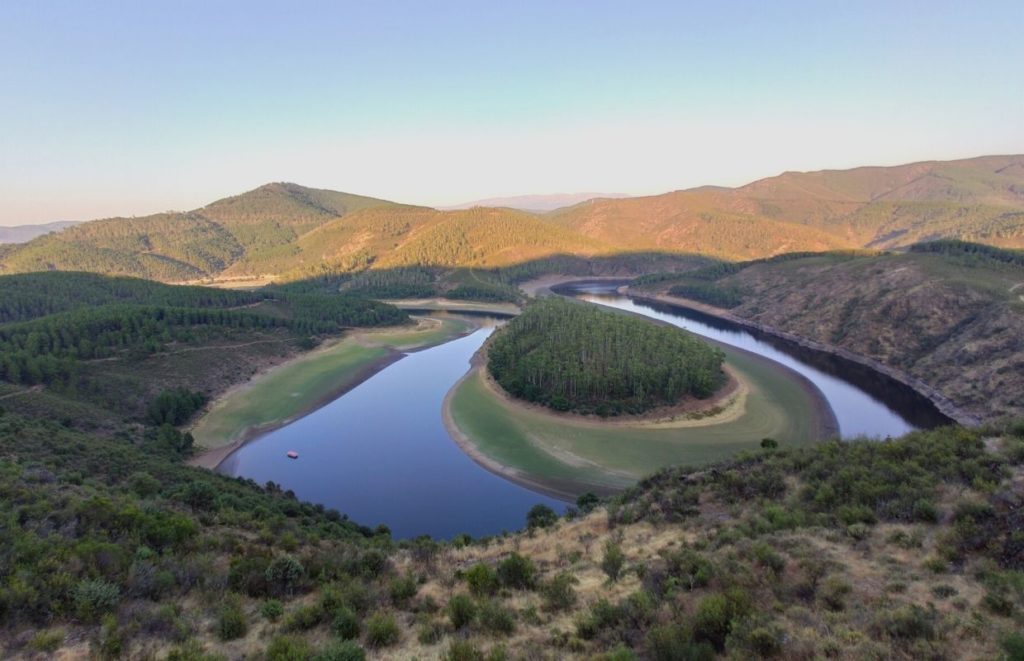
Not far from Ciudad Rodrigo you have the Sierra Francia mountains and Las Batuecas Natual Park. Here, you will find some beautiful villages and sites to explore, such as La Alberca or La Peña de Francia. Be sure to read my other posts on the villages of the Sierra Francia for more on these and why you should consider paying them a visit.
The photo above is of the Meandro Del Melero located close to the village of Riomalo.
Where to eat in Cuidad Rodrigo
La Tertulia
This is my favourite tapas spot in the historical centre. It is a family-owned place where the husband and wife, Joaquin and Lucia, run it and mum cooks the food.
On the inside, it is a cosy place complete with a fireplace and a library inspired look at the back. You can also eat outside in the shaded street of Calle Toro.
While that is all great, what is better is the food. They serve a great selection of traditional Spanish toastadas and raciones (plates to share) made with local produce.
We loved the huevos rotos con farinato (eggs with chips and a local chorizo style sausage), as well as the toasts with goat’s cheese and caramelised onions.
One final point to make was the service. The owners were just so friendly, and they even offered to keep an eye on our boisterous little son so we could enjoy a moment of peace while eating. It really was going above and beyond.
And, just when you didn’t think it gets any better, Joaquin is a magician, so we even got some free magic tricks thrown in!
I have been back a few times now, and it never fails to please.
They don’t currently have a website, but you can see more on their Facebook page.
Pub Yoanna
Usually, I would try to find local food, but as I live in Spain, I often like to find an Irish Bar for something that gives me a little taste of home. Pub Yoanna is outside the city walls, but it is worth the trip if you want burgers.
The owner is friends with a local farmer who supplies the meat, and the homemade burgers are another level of mmmmmm.
Parador de Ciudad Rodrigo
If you want something a bit more classy, the Parador de Ciudad Rodrigo is the place to be seen. While I haven’t eaten here myself yet (saving it for an anniversary), it is a historic place with beautiful views and an excellent reputation.
Where to stay – hotels in Ciudad Rodrigo
The city is not short of accommodation, and they have something to suit every budget. If you stay overnight, I’d recommend staying within the city walls. Still, you can find better deals if you are happy on the outside.
The city itself is pretty compact, so there isn’t really a specific location to recommend over another.
Please note, the links to the hotels are to Booking.com with whim I have an affiliate relationship with. If you reserve a room after clicking the link, I make a small commission to help fund The Travel Blogs.
Luxury choice – Parador de Ciudad Rodrigo
A picturesque castle with dramatic views across the valley of the River Águeda and Campo Charro countryside, dating from the 14th century. It’s a great place to unwind in an atmospheric, historic atmosphere.
The ancient stone structures of the meticulously reconstructed castle are complemented by lovely gardens. The magnificent interior is full of traditional Castillian antiques, charming period features, sunny courtyard areas, and inviting sofas.
Mid-range – Hotel Arcos Catedral
The Cathedral and main square are both within walking distance of Hotel Arcos Catedral, located in the heart of Ciudad Rodrigo. The rooms include free WiFi, heating, a TV, and a complimentary toiletry kit.
Budget pick – Hotel La Bodega
Hotel La Bodega offers comfortable rooms with en-suite bathrooms, televisions, and an internet connection. They provide a great value place to unwind after a long day’s journey or sightseeing.
The above three picks all fall within the historic core, but as mentioned, if you stay on the outside, you can find some great deals. Take a look at the map below:
Booking.comHow to get to Ciudad Rodrigo
By car from Madrid
The best way to get to Ciudad Rodrigo is by car. All of the major rental agencies are available across Spain.
It’s about a three-hour drive from Madrid, passing Ávila and Salamanca on the way. The main road that takes you out of Madrid to Ávila is a toll road that charges around €10.
The drive is straightforward, and once you are outside of Madrid, the traffic is almost non-existent.
If you plan a road trip from Madrid to Porto, it is an excellent stop to break up the journey, with the city being just 31 km from the Portuguese border.
- You may want to read – Spanish Driving Laws
Train > Bus
If you don’t have access to a car, the following best way is to take a train to Salamanca and then a bus to Cuidad Rodrigo, which should take around an hour.
Bus
You can get buses from Madrid that take around 4 and a half hours and cost about €25.
Air
There are no convenient airports for Cuidad Rodrigo. The closest is Salamanca, although this is a small regional airport. Around 185kms away is the slightly larger Valladolid Airport. Still, realistically you would have to use Madrid Airport, about 250kms in distance.
Final thoughts
I hope you can see by reading this post that I am a fan of this historic little city, hidden in the west of Spain.
Not many foreign visitors to Spain make it out this far. However, if you get the chance and really want to discover some authentic, Spanish hidden gems, I highly recommend visiting Ciudad Rodrigo and exploring the neighbouring villages.

About the author
Matthew is a seasoned traveller and founder of The Travel Blogs, where he shares his passion for exploring the world with more than 20 years of globetrotting experience behind him and more to come! Currently living in Madrid, Spain, he loves to discover new places with his young family across Spain and Portugal while still including regular trips to far-flung destinations. Don’t forget to follow The Travel Blogs on Facebook and YouTube for even more inspiration and tips!
